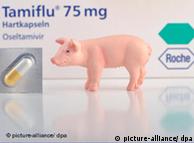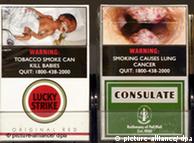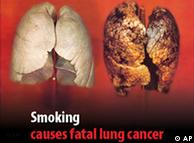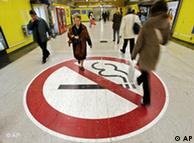Good News in the Daily Grind
Your Coffee May Have Some Health Perks, but Can Brew Trouble in People With Certain Conditions
(See Correction & Amplification below.)
To judge by recent headlines, coffee could be the latest health-food craze, right up there with broccoli and whole-wheat bread.
But don't think you'll be healthier graduating from a tall to a venti just yet. While there has been a splash of positive news about coffee lately, there may still be grounds for concern.
The Latest Findings on Coffee
- Diabetes: Many studies find that coffee—decaf or regular—lowers the risk of developing Type 2 diabetes, but caffeine raises blood sugar in people who already have it.
- Cancer: Earlier studies implicating coffee in causing cancer have been disproven; may instead lower the risk of colon, mouth, throat and other cancers.
- Heart disease: Long-term coffee drinking does not appear to raise the risk and may provide some protection.
- Hypertension: Caffeine raises blood pressure, so sufferers should be wary.
- Cholesterol: Some coffee—especially decaf—raises LDL, the bad kind of cholesterol.
- Alzheimer's: Moderate coffee drinking appears to be protective.
- Osteoporosis: Caffeine lowers bone density, but adding milk can balance out the risk.
- Pregnancy: Caffeine intake may increase the risk of miscarriage and low birth-weight babies.
- Sleep: Effects are highly variable, but avoiding coffee after 3 p.m. can avert insomnia.
- Mood: Moderate caffeine boosts energy and cuts depression, but excess amounts can cause anxiety.
Source: WSJ research
This month alone, an analysis in the Archives of Internal Medicine found that people who drink three to four cups of java a day are 25% less likely to develop Type 2 diabetes than those who drink fewer than two cups. And a study presented at an American Association for Cancer Research meeting found that men who drink at least six cups a day have a 60% lower risk of developing advanced prostate cancer than those who didn't drink any.
Earlier studies also linked coffee consumption with a lower risk of getting colon, mouth, throat, esophageal and endometrial cancers. People who drink coffee are also less likely to have cavities, gallstones, cirrhosis of the liver, Parkinson's disease and Alzheimer's disease, or to commit suicide, studies have found. Last year, researchers at Harvard University and the University of Madrid assessed data on more than 100,000 people over 20 years and concluded that the more coffee they drank, the less likely they were to die during that period from any cause.
But those studies come on the heels of older ones showing that coffee—particularly the caffeine it contains—raises blood pressure, heart rate and levels of homocysteine, an amino acid in blood that is associated with stroke and heart disease. Pregnant women who drink two or more cups of coffee a day have a higher rate of miscarriages and lower birth-weight babies; caffeine has also been linked to benign breast lumps and bone loss in elderly women. And, as many people can attest, coffee can also aggravate anxiety, irritability, heartburn and sleeplessness, which brings its own set of problems, including a higher risk of obesity. Yet it's just that invigorating buzz that other people love and think they can't get through the day without.
Why is there so much confusion about something that's so ubiquitous? After all, some 54% of American adults drink coffee regularly—an estimated 400 million cups per day—and coffee is the second most widely traded commodity in the world, after oil.
For starters, the vast majority of coffee studies to date have been observational, in which researchers examine large sets of data over many years, looking for patterns in peoples' habits and their health.
But subjects don't always remember or report accurately on how much they drink. Cup sizes can range from 6 to 32 ounces; caffeine loads can vary from 75 to nearly 300 milligrams. Loading up with sugar, flavored syrup and whipped cream can turn a no-fat, almost no-calorie drink into the equivalent of an ice-cream soda.
Even carefully constructed observational studies that correct for such variables can only find correlations, not prove a cause-and-effect relationship. There may be other, hidden reasons why people who drink a lot of coffee have a lower risk of illness—such as jobs that provide a steady income and access to health care, exercise and healthier food. Conversely, "people who don't feel that healthy may be less likely to drink six cups of coffee a day. ... It's just a possibility," says Jim Lane, a psychophysiologist at Duke University Medical Center who has studied the effects of caffeine for more than 25 years.
Risks Disappear
Indeed, many studies from earlier decades that linked coffee drinking to a higher risk of cancer were apparently detecting related habits instead. Once researchers started adjusting for study subjects who also smoked cigarettes, the additional cancer risk disappeared.
"When I went to medical school, I was told that coffee was harmful. But in the '90s and this decade, it's become clear that if you do these studies correctly, coffee is protective in terms of public health," says Peter R. Martin, a professor of psychiatry and pharmacology at Vanderbilt University and director of the school's Institute for Coffee Studies, founded in 1999 with a grant from coffee-producing countries.
Still, many researchers believe that the only way to draw firm conclusions about something like coffee is through experimental trials in which some subjects are exposed to measured doses and others get a placebo, with other variables tightly controlled. When that's been done, says Duke's Dr. Lane, "the experimental studies and the [observational] studies are in very sharp disagreement about whether caffeine is healthy or not."
Harmful Effects
His own small, controlled studies have shown that caffeine—administered in precise doses in tablet form—raises blood pressure and blood-sugar levels after a meal in people who already have diabetes. Other studies have found that caffeine and stress combined can raise blood pressure even more significantly. "If you are a normally healthy person, that might not have any long-term effect," says Dr. Lane. "But there are some groups of people who are predisposed to get high blood pressure and heart disease and for them, caffeine might be harmful over time."
Epidemiologists counter that such small studies don't mirror real-world conditions, and they can't examine the long-term risk of disease.
The prostate-cancer study, for example, compared the coffee-drinking habits of 50,000 men working in medical professions with their incidence of prostate cancer over 20 years, and also took into account family history of prostate cancer and how frequently they had screenings. Roughly 5,000 of the men developed prostate cancer during that period, including 846 cases of the most advanced and lethal kind. But the more cups of coffee the men drank, the less likely they were to be in that most lethal group. "You can't do a randomized controlled trial on men starting in their 20s and following them until they are old enough to get prostate cancer," says lead investigator Kathryn Wilson, a research fellow in epidemiology at Harvard School of Public Health. "For some of these questions, observational studies are the best we are going to get."
As for diabetes, at least 18 studies have found that drinking three or more cups of coffee a day is linked with a lower risk of developing the disease. The more such findings are repeated, particularly with different populations, the stronger the evidence is.
Beyond Caffeine
In both the prostate and diabetes studies, the health benefits were found for caffeinated as well as decaffeinated coffee, suggesting that some other component in coffee is responsible. Coffee contains traces of hundreds of substances, including potassium, magnesium and vitamin E, as well as chlorogenic acids that are thought to have antioxidant properties.These may protect against cell damage and inflammation that can be precursors to cancer, diabetes, neurological disorders and cardiovascular disease.
One theory gaining credence is that some of those beneficial components may counterbalance some of the harmful effects of caffeine. For example, while caffeine keeps people awake in part by blocking adenosine, a brain chemical that brings on sleep, the chlorogenic acid in coffee keeps adenosine circulating in the brain longer.
And while caffeine seems to boost adrenaline that primes the body for action, coffee itself may have a calming effect. Even the aroma of coffee beans can help ease stress in rats, researchers at Seoul National University in South Korea showed in a study in the Journal of Agricultural and Food Chemistry last year. Chlorogenic acid also slows the release of glucose into the bloodstream after a meal, which may counteract caffeine's glucose effect.
Benefits Cloaked in 'Mays'
"It's a yin and yang effect," says Vanderbilt's Dr. Martin, an addiction psychiatrist who also notes that former alcoholics who drink coffee are more apt to stay sober than those who don't. Even though these studies are just associations, he says, "they may provide leads for us to better understand some of the most common illnesses that affect mankind as well as developing ways to treat them. But everything is cloaked in 'mays.' "
Most researchers agree that there isn't enough evidence about the benefits of coffee to encourage non-coffee drinkers to acquire the habit. And no one has come close to finding a recommended number of cups per day for optimum health. People's reactions to coffee are highly individual. One small cup can give one person the jitters while others can drink 10 cups and sleep all night.
At the same time, people who love coffee probably don't need to worry that they are harming their health by drinking it -- unless they already have high blood pressure or are pregnant or are having trouble sleeping, in which case it's prudent to cut down.
Even Dr. Lane, who thinks the risks of caffeine outweigh coffee's potential benefits, concedes he drinks several cups a day. "Why do I do it?" he muses. "I ask myself that question ..."
—Email healthjournal@wsj.com.Correction & Amplification:
Peter R. Martin, a professor at Vanderbilt University School of Medicine and director of the Institute for Coffee Studies there, is an addiction psychiatrist. An earlier version of this column incorrectly stated that he is an addictio![[HEALTHCOLjp]](http://s.wsj.net/public/resources/images/PJ-AS946_HEALTH_D_20091228171020.jpg) Hector Sanchez for The Wall Street Journal
Hector Sanchez for The Wall Street Journal 
![[HEALTHCOLfront]](http://s.wsj.net/public/resources/images/PJ-AS943A_HEALT_NS_20091228205839.gif)




















